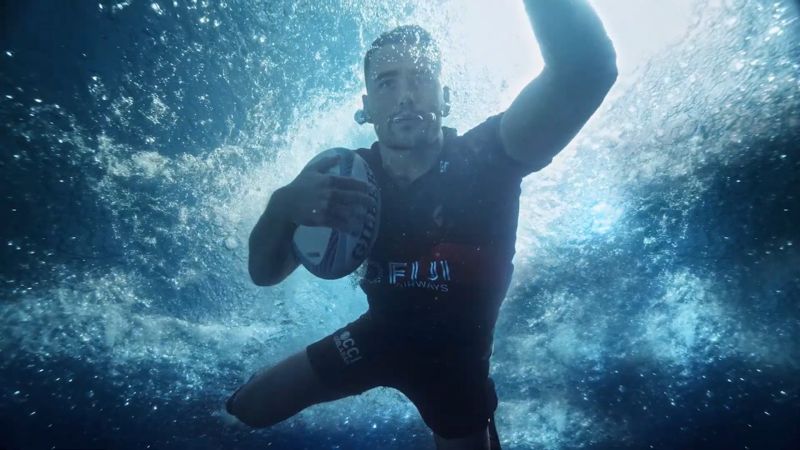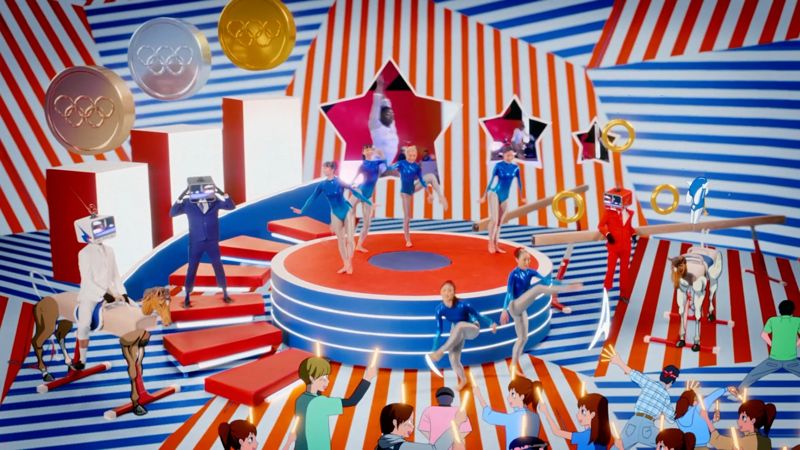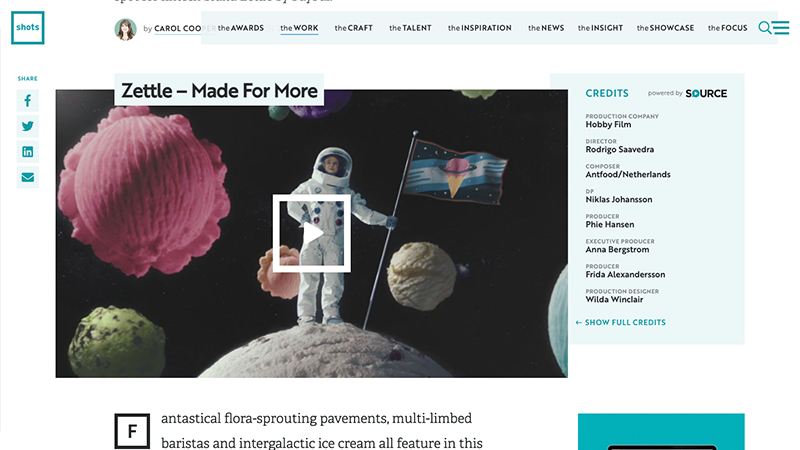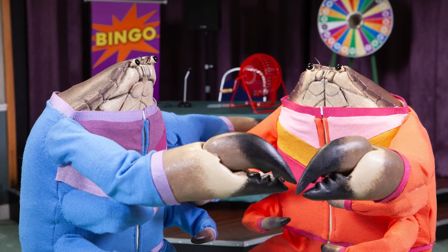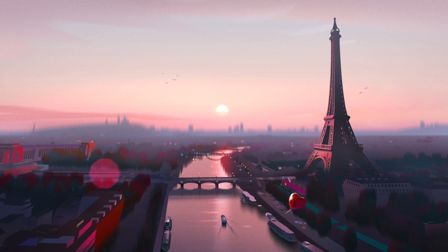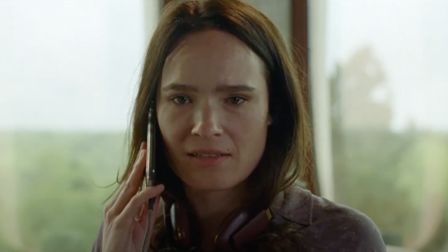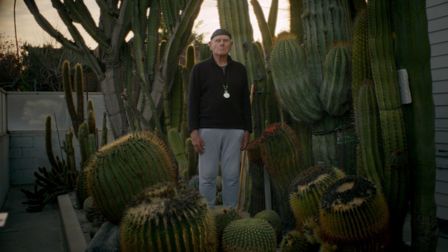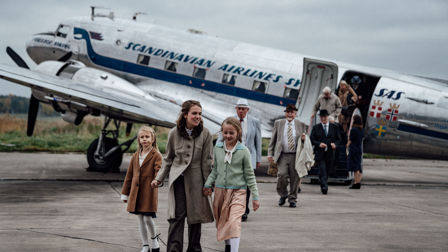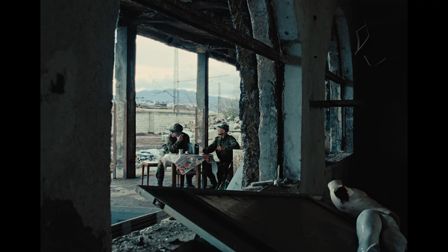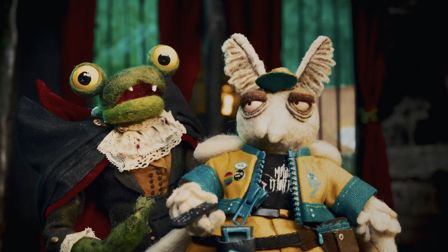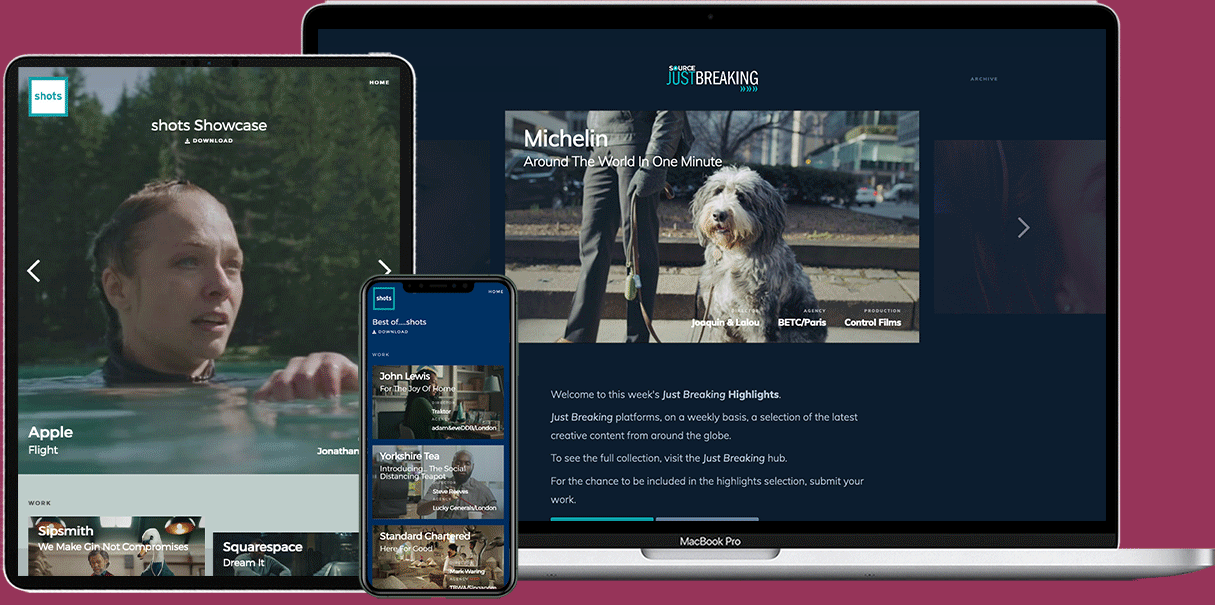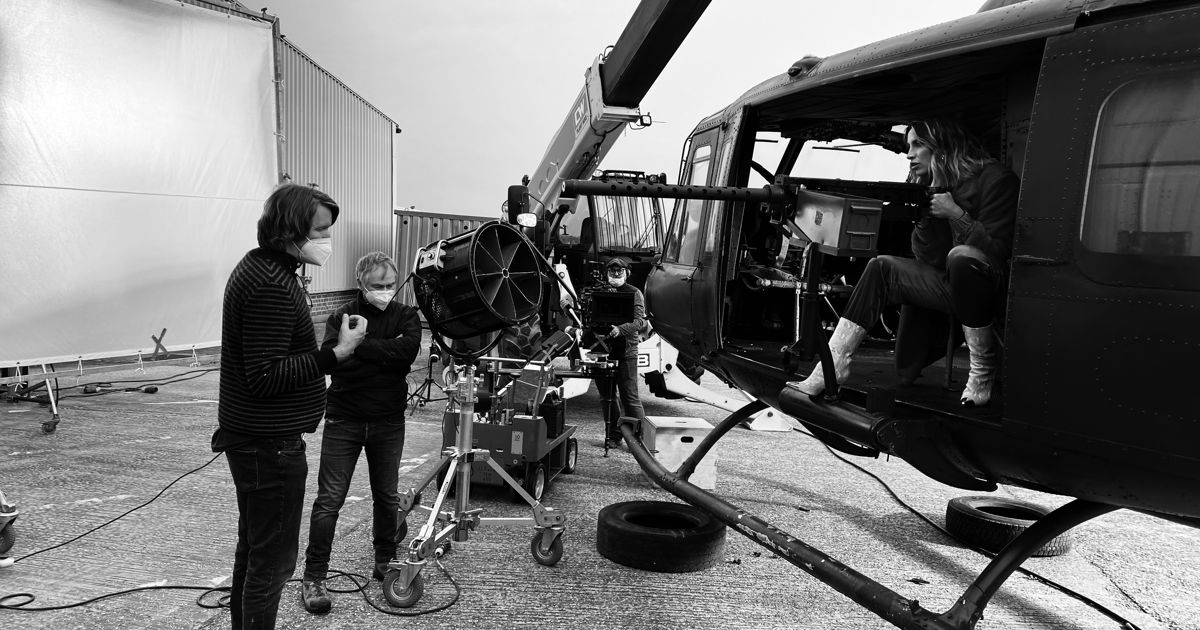Tom Hooper and Sam Walker on raising the stakes for ITV
Part three of ITV Hub's Drama Vs Reality campaign is an all-action, high octane, two-and-half-minute fire fight. Uncommon's ECD Sam Walker and Oscar-winning director Tom Hooper talk us through the logistics of putting a reality TV star in a Huey and giving her an M2 .50 calibre machine gun.
Over the last couple of months ITV Hub has come out fighting with its Drama Vs Reality campaign.
The first in the series, Poison, pitted Love Island's Kem Cetinay against renowned actor Jason Watkins in a battle to the death, while G&T saw Katherine Kelly revealing her darker side.
Each film has its own flavour; Poison is very lyrical, G&T is all about vibe, and Phone Call is unapologetically loud and ferocious.
The third film in the campaign, The Phone Call [below], was released last week and this time the stakes - and the action - have been raised as Grace actor Richie Campbell and The Only Way Is Essex's Ferne McCann face off in a blistering two-and-a-half-minute action scene and encompasses explosions, helicopters and heavy duty machine guns.
The campaign was created by Uncommon London and, below, ECD Sam Walker and SMUGGLER's Oscar-winning director Tom Hooper, both of whom have been ever-present across the work, reveal the inside information on how the campaign has progressed, how they got a reality TV star to shoot an M2 50 machine gun, and how that helicopter could have literally brought the house down.
Credits
powered by
- Agency Uncommon/London
- Production Company SMUGGLER/London
- Director Tom Hooper
-
-
Unlock full credits and more with a Source + shots membership.
Credits
powered by
- Agency Uncommon/London
- Production Company SMUGGLER/London
- Director Tom Hooper
- Executive Producer Sara Wallace
- Executive Producer/Managing Director Fergus Brown
- Editor Russell Icke
- Executive Producer Annabel Bennett
- VFX Supervisor Andrew (Barnsley) Wood
- Executive Producer James Beck
- Postproduction Coordinator Larisa Covaciu
- VFX Supervisor Giles Cheetham
- Executive Producer Magda Krimitsou
- Sound Designer Jack Sedgwick
- Producer Ornela Peka
- Talent Ferne McCann
- Talent Richie Campbell
- Producer Nick Sutherland Dodd
- DP Barry Ackroyd
- Production Designer Eve Stewart
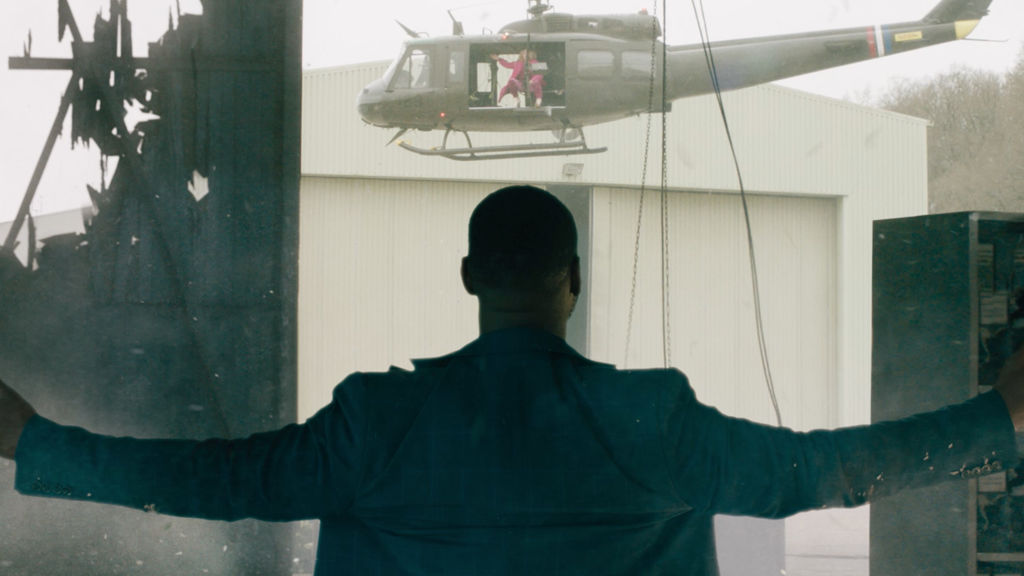
Credits
powered by
- Agency Uncommon/London
- Production Company SMUGGLER/London
- Director Tom Hooper
- Executive Producer Sara Wallace
- Executive Producer/Managing Director Fergus Brown
- Editor Russell Icke
- Executive Producer Annabel Bennett
- VFX Supervisor Andrew (Barnsley) Wood
- Executive Producer James Beck
- Postproduction Coordinator Larisa Covaciu
- VFX Supervisor Giles Cheetham
- Executive Producer Magda Krimitsou
- Sound Designer Jack Sedgwick
- Producer Ornela Peka
- Talent Ferne McCann
- Talent Richie Campbell
- Producer Nick Sutherland Dodd
- DP Barry Ackroyd
- Production Designer Eve Stewart
Above: The Phone Call, the third in the series of the Drama Vs Reality campaign for ITV Hub.
The last two films were very bold in their approach, and much acclaimed on their release; did you feel any more pressure with this third one?
SW: We’re all really pleased how they’re being received and it’s exciting to release a third that’s completely different in tone again. This film, from script stage, was always going to have the biggest scale and it’s great that the campaign is building up rather than launching and then fading away. The biggest pressure I always feel is from myself to be honest. Which may or may not be a good thing. But with Tom and the team we had around us, on set, and in post, I was confident we could do something that would live up to our own expectations.
The previous films were more low key in set up; why did you decide to go full-action for this one?
SW: Each film has its own flavour; Poison is very lyrical, G&T is all about vibe, and Phone Call is unapologetically loud and ferocious. Each one has cinematic scale but in different ways, finding different reference points to collide the opposing worlds of drama and reality into each other.
The aim was genuine, cinematic scale, something that loudly announced its arrival and then just kept getting bigger and bigger.
For the third film we felt that if we were going to do a helicopter gun ship action film, we should properly do a helicopter gunship action film. The aim was genuine, cinematic scale, something that loudly announced its arrival and then just kept getting bigger and bigger. Tom is obviously brilliant at handling large scale productions and we had a shared vision right from treatment stage. We were always going to push this film to the limit but it makes it much easier when you both trust each other and have a symbiotic working relationship.
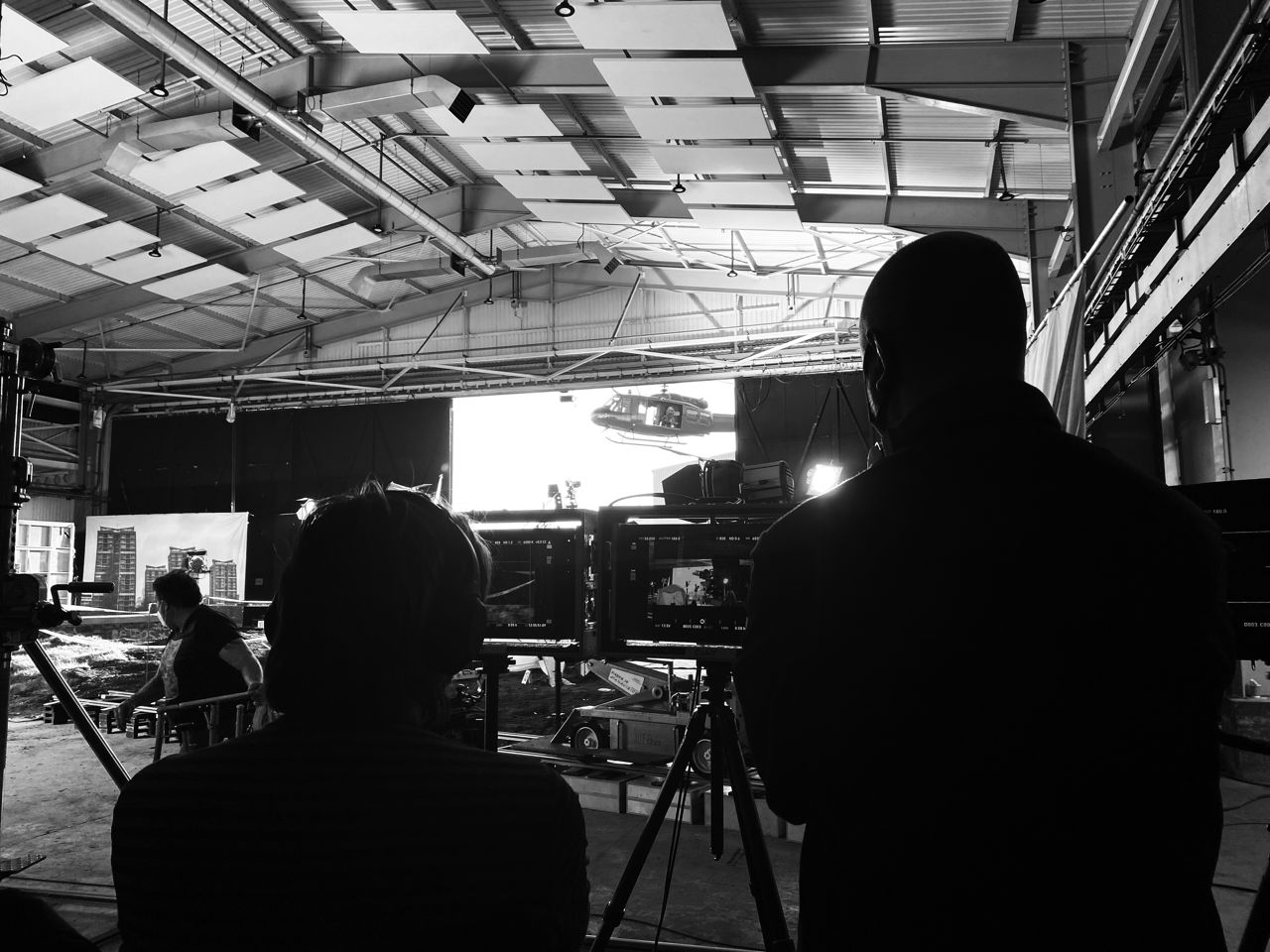
Above: Director Tom Hooper [left] and Sam Walker watch on as Ferne McCann's chopper arrives.
Can you tell us a bit about the casting; how wide-ranging was that and why were Richie Campbell and Ferne McCann the eventual best choices?
SW: Richie is a brilliant actor and leading several of ITV’s most high-profile new dramas, and Ferne is one of the UK’s most iconic reality TV stars, so we felt they both represented their genres perfectly.
In each of the films so far I’ve been amazed how much the reality stars have brought to their roles.
In each of the films so far I’ve been amazed how much the reality stars have brought to their roles. Ferne is a total fucking badass. That was a real gun she was firing with immense recoil and she just owned it. Her beserker-like battle cries really make the film come alive. Richie brings a humbleness to his performance that makes you really feel for him. Trying to navigate the most important work call of his life while being shot at continuously by a high-powered machine is not an everyday situation but we all recognise ourselves in the tension of important calls being interrupted.
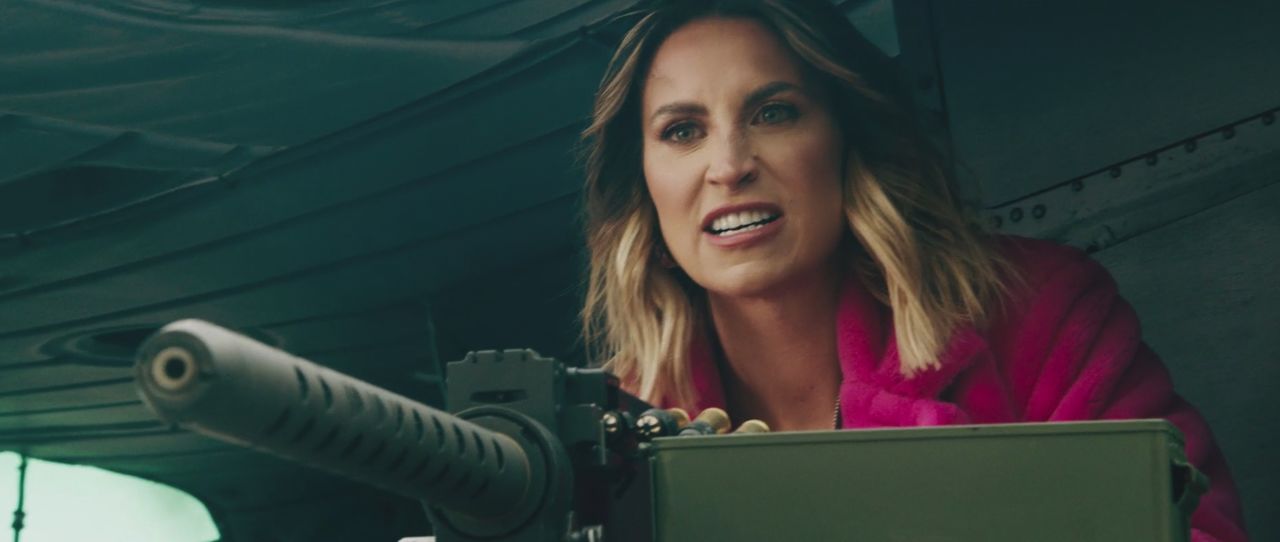
Above: Ferne McCann at the business end of an M2 .50 calibre machine gun.
It looked like a very rigorous shoot for both Richie and Ferne; can you tell us a bit about that process and what they/the stunt actors went through?
SW: Ferne had training with an armourer and various weapons. We wanted the most intense weapon we could find and tested the minigun they use in Predator, but the armourer suggested the M2 .50 calibre gun would be even more ferocious. And, once we’d seen and heard it, we knew he was right.
The recoil and muzzle flashes are so visceral there’s almost no acting required. Ferne’s reactions and performance are real, she properly got into it. I think it pays off to invest in reality rather than relying too heavily on post (although our post partners did an incredible job too). We wanted to be more in the world of Black Hawk Down rather than a Marvel movie.
Richie did a lot of the action himself, and his stuntman didn’t hold back going through the window. Action is a genre Richie said he was keen to move into as an actor, so he was really up for it and threw himself into the role. We couldn’t have asked for more from either of them.
We found out that the blank ammunition cost a staggering £5k per minute, as it fires so many rounds.
TH: To be honest, Ferne loved it. Firing a .50 calibre for real is so powerful she almost always screamed every time she pulled the trigger, so I simply built on that. The first time she opened fire, even though I was wearing ear defenders 50 yards away, I still jumped off my chair, the noise and air displacement is so huge. However we found out that the blank ammunition cost a staggering £5k per minute, as it fires so many rounds, so we were actually really constrained in how much we could actually fire it!
The main discipline for Richie was getting the dialogue and rehearsed blocking perfect when there was live pyro, given we were trying to do it in one take (he was brilliant at this). He did all his own action apart from jumping through the window, where we used a great stunt double, and he was tireless, precise and great to work with.

Above: Richie Campbell, far left, is running for his life.
How much of the set destruction and effects are practical versus digital?
SW: The vast majority of the set destruction scenes are practical effects. That’s a decision we made right from the start; to shoot as much of the effects as possible on set.
There’s no way we would have created that helicopter in post with the effect it has on its surroundings. Not because it’s not technically possible, but because the down draft is way, way more powerful than you would imagine when it’s as low as it was. It literally blows over any part of the set that’s not actually tied down. The catering table destruction scene is all done for real in one take, as is the office being blown to bits at the end. We shot with four to six cameras, depending on which scene we were shooting, and our process was to spend most of our time rigging the explosives, rehearsing performance, and then we had just one take to get it right.
Everything with Ferne’s gun is real too (except we were firing blanks, of course). The violence of the recoil and muzzle flashes can’t be exaggerated and the noise is unbelievable in real life. It’s the way Tom shot the most epic scenes in Les Miserables. Spend the money setting the scene with live special effects and let the actors react to the real-life action.
The violence of the recoil and muzzle flashes can’t be exaggerated and the noise is unbelievable in real life. It’s the way Tom shot the most epic scenes in Les Miserables.
TH: The helicopter was real; a 1972 Huey that had done service in Vietnam. We had a great pilot, and our First AD was Terry Needham, who was Ridley [Scott]’s First on Black Hawk Down and Stanley [Kubrik]’s on Full Metal Jacket, so he was brilliant - and overqualified! - at coordinating aerial work. We shot at Dunsfold Aerodrome so there was no limitation on flying using low fuel payloads - the pilot explained that if he had flown that close to the hanger with a full payload of fuel the downblast from the Huey would have ripped the sides off the building! There’s a visceral energy that real helicopters bring that to me was essential.
Most of the pyro is real, done in camera. For example, the catering table section which, because of cost and set up time, was all done in one take. The main exception is when Richie jumps into the hole in the forensics set; it wasn’t safe to let off detonations powerful enough to move that much earth so close to the actor, so Barnsley and his team at Rascal did great work doing that in CG.
The set splitting apart at the end is all done for real. My genius designer Eve Stewart, who does all my films, worked with SFX designer Paul Clayton to rig the set so it can fall apart - again done in one take.
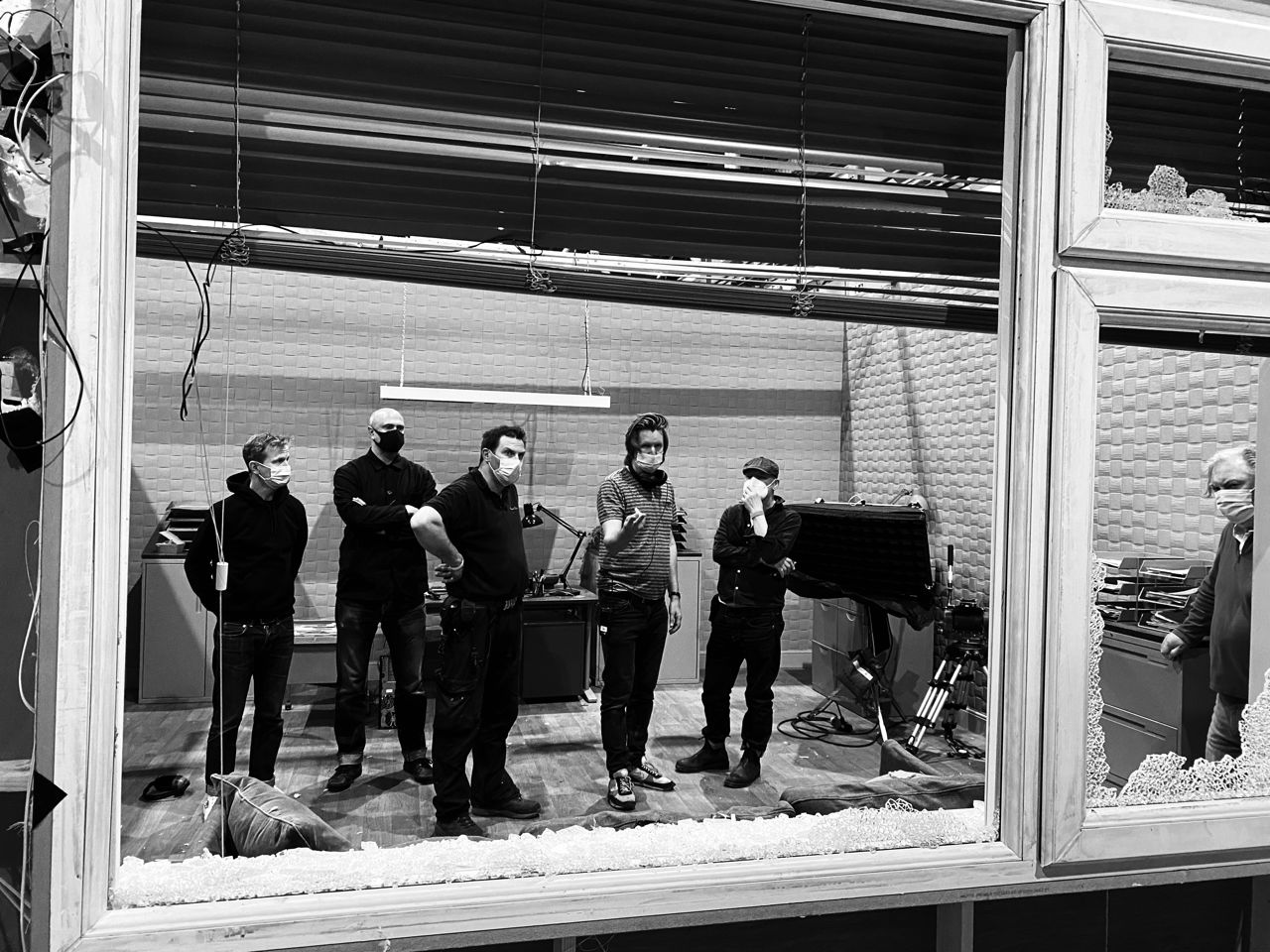
Above: Walker [second from left], Hooper [fourth from left] and crew look on at the carnage they orchestrated.
How hard is it to orchestrate quite a long and complex piece of dialogue alongside a huge action set-piece and still keep both parts engaging? SW:
SW: It’s all about rehearsal and proper planning. We rehearsed until we’d honed performance, both dialogue and how the explosives would behave around the blocking (as much for safety as anything else), then set the cameras with the different camera teams, then called ‘action’ and hoped for the best. It was only really on playback you could actually see what we’d captured.
I think the key was letting the dialogue lead you through, never letting it get subsumed by the noise of the attack.
TH: I think the key was letting the dialogue lead you through, never letting it get subsumed by the noise of the attack so that you couldn’t follow what Richie is saying. That’s where the humour lies. And yet keeping the onslaught intense enough so the joke we can all relate to of trying to make an important phone call against the most extreme background noise imaginable never gets lost. It’s also about rehearsal. If the dialogue holds well without the pyro, then you get more confident that when both are happening it will work. And it’s about innovating with the action so it’s not repetitious, in this case making use of the film studio setting to do things that you probably wouldn’t have seen before in an action movie.
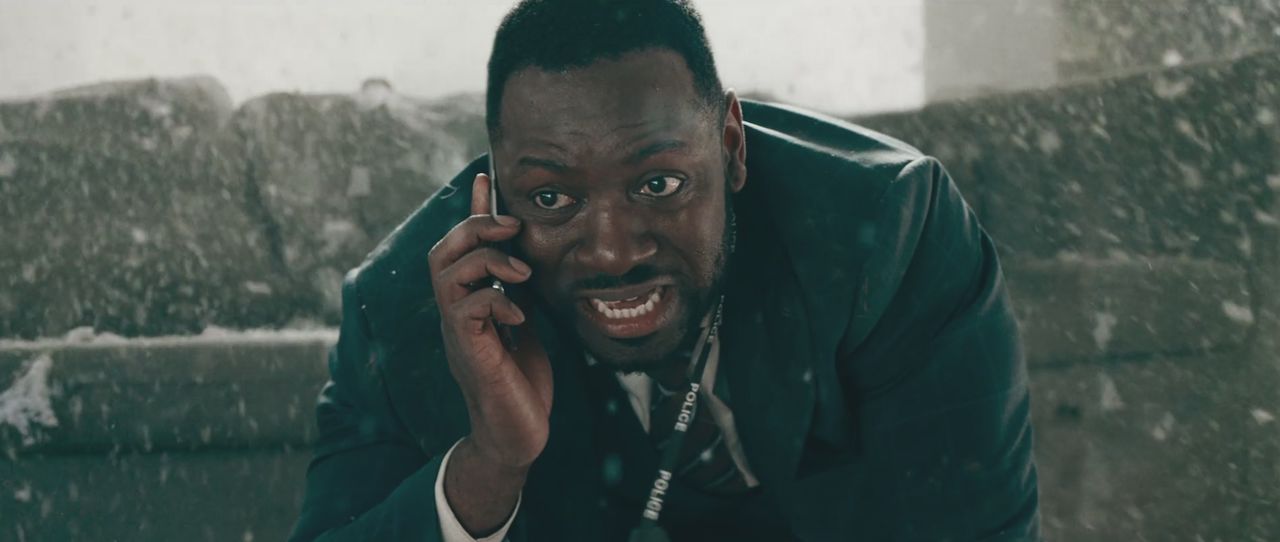
Above: Richie Campbell keeps the conversation going against the odds.
What was the most challenging part of working on this project?
SW: The films were incredibly ambitious for the budget we had but we had a collective determination to make them all happen. It would have been far easier to do scaled down versions of the films, or cut the number we were making, but everyone involved was excited by what we were trying to do so we were all pushing what was possible right from script stage.
The battle may be over, but the war goes on.
Huge credit to the Uncommon team, Tom, [producer] Nick Sutherland-Dodd and Smuggler, our crew, our post partners Barnsley at Rascal, Giles Cheetham at ETC, [sound designers] Jack Sedgwick at Wave, Anthony Moore and James Utting at Factory, and of course [editor] Russell Icke at The Whitehouse, for what they’ve helped us produce with this campaign. We’ve been very lucky to have such an exceptional team around us on each of the films. And, of course, our amazing ITV clients who’ve backed us from the beginning.
TH: Definitely delivering the scale of the film, the number of scenarios and the scale of the pyro, the liveness of it all, within our budget and time. We actually had to shoot really fast and I could only achieve it with such a great team. My DP, Barry Ackroyd, was key to this, as was my producer Nick Sutherland-Dodd, and by having such a strong creative relationship with Sam, who is so quick on the floor.
Reality won out in Poison, drama came out on top in G&T, this one seems to be a draw; will there be any more in the campaign to continue the battle between drama and reality?
SW: The battle may be over, but the war goes on.

